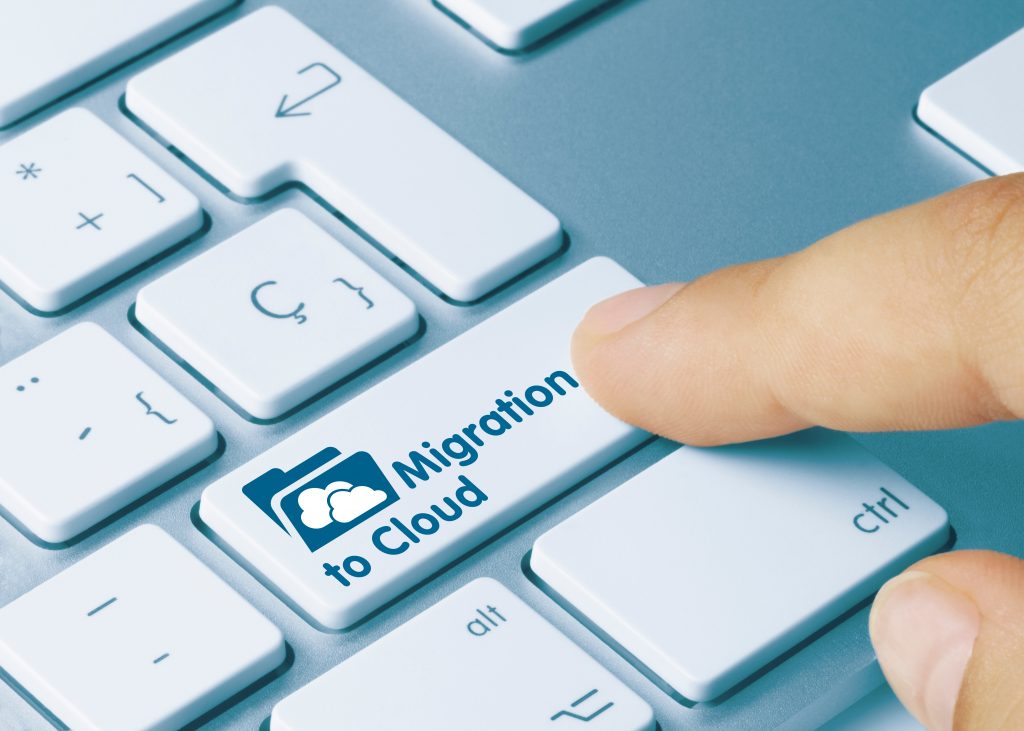Outdated servers, unsecure firewall appliances or unreliable legacy infrastructures all pose critical threats to your business, but upgrading from these systems presents its own list of challenges. 70% of businesses delay infrastructure refreshes multiple times in a five-year period.
The constantly-evolving cybersecurity threatscape is forcing you to upgrade your systems and operations. Now what? While moving your businesses digital assets, such as data, IT resources, and applications to the cloud may seem like a herculean task, your ability to do so hinges on your understanding of different service models and processes.
What are the different kinds of Cloud Computing and Service Models?
Cloud migration tends to describe the move from physical processes to the cloud, although it can also refer to the process of moving from one cloud platform to another. When contemplating cloud migration, you must take into account which type of cloud computing as well as which service model best fits your business’s unique needs.
There are four different types of cloud computing: public cloud, private cloud, hybrid cloud, and multi-cloud.
- Public cloud lets many users access computer resources through the public internet. These services can be free or available as pay-per-use to anyone who wishes to use or buy them. Furthermore, the cloud service provider is responsible for all maintenance and management. They tend to be the fastest to deploy, as well as the most quickly and easily scalable.
- Private cloud keeps data within the data center and uses a proprietary architecture; it’s only available to its users and owners. The private cloud may be located in a data center on-site or hosted by a provider in a remote location. However, the business is responsible for cost and accountability in managing this private cloud.
- Hybrid cloud combines elements of private and public cloud and allows resources to move between the two. It combines an on-site data center with public cloud systems. It is useful for scaling up and down to handle excess capacity, as well as save on costs associated with purchasing unnecessary products and services.
- A multi-cloud scenario is the use of multiple cloud services in a single environment, but of the same type (either private or public). These systems can leverage multiple vendors, service models, or simply be used to have backup frameworks.
Just as there are different types of cloud computing there are also three different types of service models: SaaS, PaaS, and IaaS. Each of these are acronyms for different kinds of service models.
- SaaS stands for Software as a Service, which is software provided over the internet. Examples include Google Drive and Microsoft Office 365. Your organization rents the applications it needs.
- IaaS stands for Infrastructure as a Service, which means that you’re moving your infrastructure into the cloud. It minimizes costs by reducing maintenance of on-site data centers, saving on hardware costs, and providing business insights. IaaS has many business uses, from simple cloud migration to high-performance computing to testing and development.
- PaaS, or Platform as a Service, allows you to build your own applications and data. It has the same benefits as IaaS, but also has more advantages and tools. Users gain access to building these applications without having to pay for the infrastructure required to host them. Workflow using PaaS tends to be more efficient using already available components built into the platform, such as directory services and security features.
Outside of these 3 models, there is also the serverless model. While servers still run any code, the tasks associated with running these servers aren’t visible to the developer. In the serverless model, developers focus on what matters most — adding value to the business. By using resources in the most efficient way, development cycles are shortened. Furthermore, the infrastructure itself will scale up and down to match any workload.
Understanding the different kinds of cloud computing and service models can help you decide which type of cloud migration might be best for you.
What are the different types of Cloud Migration?
There are many different approaches to cloud migration from move and improve to rip and replace, but the three main ones are re-host, re-platform, and re-factor.
- Re-host is the simplest method, where you lift an application from an on-premises host and shift it to a cloud service as-is, no code or architecture changing needed. The key to ensuring your applications still work is to maintain access to the same data it previously had when it is in the cloud. While re-hosting is the simplest method, it has inherent limitations and risks due to its nature of not being cloud-native. These include being unable to take advantage of cloud technology, performance issues, and the possibility of failure due to exacerbation of known issues and vulnerabilities.
- Re-platform is when you choose to migrate to an operating system version based on CNaaS Platform Standards when the application can support it, reducing the total count of enterprise-supported platforms as a way to decrease operational expense. It requires some modification of your applications to adapt to the new environment, such as to better scale or to benefit from automation. Re-platforming is cost-efficient as major development is unnecessary, and is also cloud-native. However, specialized components and systems may not be cost-efficient, and the scope of the re-platforming project can creep quickly. Therefore, a good plan must be in place to ensure that re-platforming is best for your business.
- Re-factoring is the most intensive approach to cloud migration. It is when a company modifies and rewrites applications in order to migrate them. It takes the most customized approach to modify your application to fully take advantage of cloud features and security. However, it is also the most complex, requiring careful testing after changing code at the risk of major outages to your applications. Even so, the long-term savings from increased efficiency as well as the inherent adaptability of truly cloud-native infrastructure may mean that re-factoring is the best way to migrate your business to the cloud.
Is Cloud Migration right for your company?
Cloud migration simplifies your business and allows your team to perform their best in a secure environment.
If your business is ready to migrate, at Blue Equinox we offer many different cloud and managed services which you can check out here!


